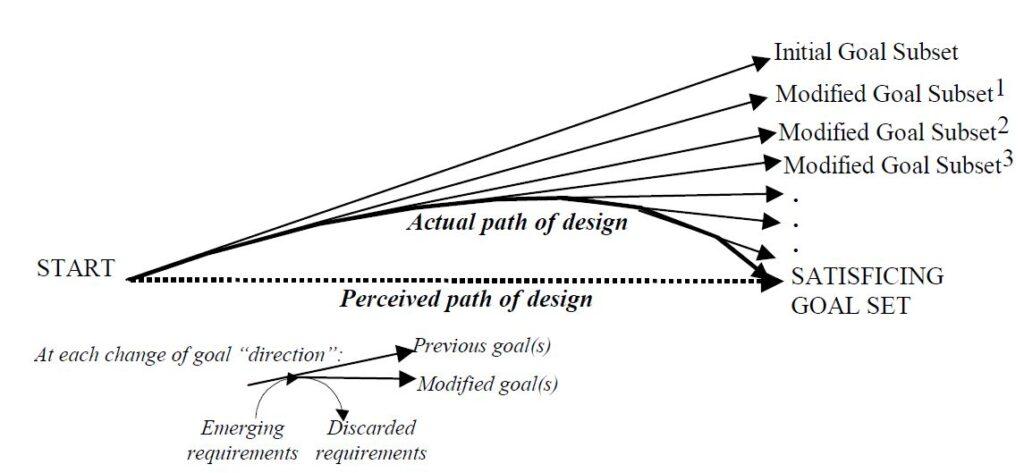When attending a boundary-spanning design meeting the other day, I was reminded of how important pattern sensitization is to design. When we explore a new problem-situation, we structure it according to the patterns that we perceive in that situation. This is why experienced designers are so much better at design than novices. It is not that experienced professionals are sharper, or better at design — but just that they have a wider repertoire of patterns to call upon. As they recognize familiar elements of the situation, they fit partial solutions to those elements. Problem decomposition is not hierarchical, in the sense proposed by Alexander (1964), but convergent. The problem-space and the solution-space co-evolve, as designers explore these in tandem (Maher and Poon, 1996; Maher and Tang, 2003).
Back to the meeting.
A group of strategic managers (including the systems people and the business process change manager) were examining how to revise business process support for a routine workflow. The problem that they faced was that this had been adapted by several workgroups (whose representatives were present) over time. So each of these managers had a different perspective of the problem, depending on what each group was trying to achieve. The customer support group were frustrated that they could not access all of the customer information in the system, but had to call another group to obtain missing information. The order-processing group were frustrated that they could not track the progress of an order without having to run three separate IT applications. The sales and marketing group were incensed that not all of the latest products and services were publicized on the website. None of these people – including the IT group managers – could see that these were related problems. They spent hours debating the fields to be displayed on the screens and the detailed reports needed, without realizing that the workflows were related.
The breakthrough came by accident, when the Process Improvement Manager was mapping the “requirements” on a whiteboard. He started to link two of the requirements, stood back and then said “So this step is also related to this one, isn’t it?” Then the Marketing Manager said “That comes just before the promotions stage.” As the Process Improvement Manager drew a process diagram, each individual kept adding in pieces of the puzzle, with how they were related.
Design as bricolage.
Bricolage involves repeated “trying out” and experimentation until a pattern is discerned that is useful. (The word derives from Bricoleur, a French term meaning “handy-man” or “jack- of-all-trades.”) Claudio Ciborra described bricolage as “the constant re-ordering of people and resources that is the true hallmark of organizational change.” But Bricolage is not random experimentation. It is based on leveraging the world “as defined by the situation” (Ciborra, 2002). Pattern sensitization adds another dimension to bricolage. It can now be seen as an ordering of situation elements until they make sense according to previously encountered patterns. So design is like a jigsaw. Each person carries around a partially-completed set of jigsaw pictures in their heads. The core problem of design is to use a problem-representation that can allow people to communicate the structures in their “mental jigsaw picture” to others.
References
Alexander, C. Notes On The Synthesis Of Form. McGraw Hill, New York NY, 1964.
Ciborra, C.U. The Labyrinths of Information: Challenging the Wisdom of Systems Oxford University Press, Oxford UK, 2002
Maher, M.L., and Poon, J. “Modelling design exploration as co-evolution,” Microcomputers in Civil Engineering (11:3) 1996, pp 195-210.
Maher, M.L., and Tang, H.-H. “Co-evolution as a computational and cognitive model of design ” Research in Engineering Design (14:1) 2003, pp 47-64.






